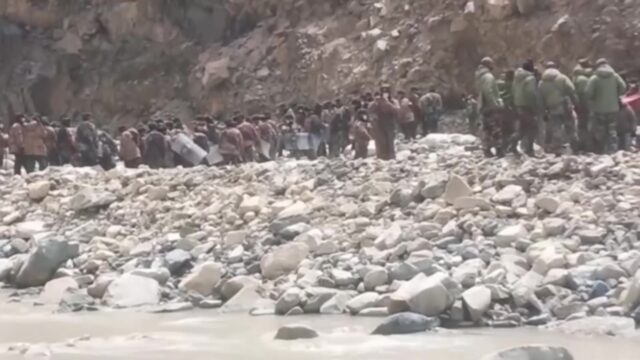NEW DELHI: Tension with China in Ladakh and the prospect of extended deployment of troops and equipment (in the absence of a complete Chinese withdrawal from Pangong Tso and other places) have forced the Indian Army to fast track procurement of vital equipment.
Top on the list are 200 tactical Unmanned Aerial Vehicles (UAVs) to bolster the ISR (intelligence, surveillance, reconnaissance) capacity of frontline troops along the Line of Actual Control (LAC). Moreover, in view of the possibility of additional deployment of troops in the forward areas, more Arctic tents and shelters are being procured to be used by forward deployed troops during peak winter season.
The small and medium UAVs or Remotely Piloted Vehicles will equip units deployed all along the Himalayan frontier with China, stretching from Arunachal Pradesh in the east to Ladakh in the west to give the battalion commanding officers and brigade commanders the ability to obtain real time intelligence on PLA activities close to the LAC. The need for ground-level commanders to have domain awareness in their areas of interest was felt acutely during the ongoing standoff with the PLA at various friction points in Ladakh.
While satellite images obtained by the National Technical Research Organisation (NTRO) and aerial photography done by the Aviation Research Centre (ARC) are vital in assessing Chinese deployment both along the LAC and inside Tibet and Xinjiang regions, lower formations on the frontlines have flagged the need to have their own means for 24×7 coverage at the tactical level. The satellite surveillance and aerial photography interpretation often takes time to reach the lowest formation, creating a void in intelligence that is essential for a battalion or a brigade to act upon, particularly during standoffs such as the current one.
The fast track procurement of tactical UAVs (with hour-long endurance) is in its final stage, people aware of the matter said. Deployment of these UAVs will enable battalion commanders to factor in Chinese readiness and strength in the immediate vicinity when patrolling parties are sent out or if an unscheduled meeting comes up, those familiar with the situation along the LAC say.
With over 20 acknowledged ‘hotspots’ in the Ladakh sector alone, the Indian Army has decided not to take chances in the near future to avoid another Galwan-like episode where the commanding officer of 16 Bihar was killed in an unprovoked vicious attack, as he went to meet his Chinese counterpart. Subsequent clashes killed more on either side.
According to those involved in planning the deployment of UAVs in the coming months, 20-odd identified trouble spots in Ladakh will get top priority. Over the years, several hotspots have emerged in eastern Ladakh. They are divided in three categories. Both India and China agree on the spots in the first two categories. It is the third list that is creating new friction.
- Mutually agreed disputed spots: Samar Lunpa; Trig Heights and Demchok
- Areas of differing perceptions: Samar Lunpa; Depsang; Point 6556; Changlung Nala; Kongka La; Spanguur; Mount Sajjun; Dumchelle
- Relatively new disputes: North bank of Pangong Tso; Chumur; Galwan
There are similar areas of disputes in Sikkim, Uttarakhand and Arunachal Pradesh, China specialists point out. With the resolution of the current standoff still hanging in the balance, the quicker the UAVs are brought, the better it would be for frontline commanders to tackle the Chinese who seem to have decided to test India’s preparedness and speed of response, after relative inactivity along the LAC in the past quarter of a century.
















